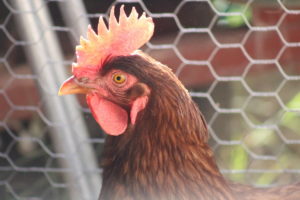
ST. GEORGE — In response to social distancing guidelines, innovative Utahns have found activities that allow them to be with family and also explore new adventures. In 2020 during the COVID-19 pandemic, Utah state park visitation rates increased by 36% during recreation months compared to 2019.

In addition, interest in backyard agriculture increased, including gardening and chicken ranching, and have been meaningful pandemic pastimes. Prior to COVID-19, several Utah cities passed ordinances to allow urban residents to maintain flocks of backyard chickens.
Unfortunately, local rat populations have also increased and have been linked to the rapid growth in backyard chicken ranching. Rats and other rodents have been implicated in spreading animal-to-human diseases including bubonic plague, hantavirus, leptospirosis and rat-bite fever. Humans can get these diseases if they are bitten by an infected rat or inhale or ingest microorganisms in the rat’s feces or urine.
Cities that have allowed backyard chicken ranching have designed their ordinances to eliminate conditions that might attract rats and other rodents. These ordinances require the rancher to “rodent-proof” chicken coops and other outbuildings that contain food. They also prohibit ranchers from storing garbage unless it is stored in rodent-proof containers. Many ordinances also give city employees authority to inspect ranches and correct sanitation issues.
Rats and mice are prolific breeders. They readily capitalize on new opportunities that afford them food, cover and water. Rats also prey on chicks and eggs, and if there is a severe infestation and food is scarce, they can also raid coops at night and attack juvenile and adult birds. Rats kill by biting the head or neck. Parts of chicken bodies may be eaten, and the corpses pulled into burrows or other concealed locations for later feeding.
You may not see rats unless you have a severe rat problem, as they are shy and nocturnal. However, if they are around, you may spot chewing damage. If your coop has no openings for them, they will make their own so watch for gnawed corners. They are also great burrowers and can enter a coop or run from below.
Tips to deter rodents
Don’t create conditions that attract rodents, raccoons or other small animals to your yard. Remove your flock’s feeders and waterers each night and replace them in the morning. Chickens won’t eat or drink at night, but rats will.
Be sure to store chicken feed in rodent-proof containers, as rodents are more likely to chew through wood than plastic and more likely to chew through plastic than metal. If they have a food source such as stored feed, they will be challenging to eliminate.

Use small woven mesh hardware cloth for the best protection. Chicken wire is not a barrier to predators. Most predators can tear through it, rats can bite through the thin wire, and some smaller rodents will squeeze through the holes. Use chicken wire to keep chickens in, not to keep predators out.
Because rats are burrowers and climbers, consider covering the bottom of your run, burying the bottom of your fence or providing an apron so rats cannot enter from below. The only way to completely exclude them from the chicken yard is a fully enclosed run – top, bottom and sides.
Don’t provide rodents, raccoons and other small furried creatures with hiding places. Many people choose chicken coops with raised floors that are open beneath so rodents and other animals don’t have hiding places.
Reduce populations. In residential areas, simple wood-based snap traps baited with peanut butter work well.
For further information, contact your local county extension office or click here.
Written by TERRY MESSMER, Utah State University Extension wildlife specialist.
Copyright St. George News, SaintGeorgeUtah.com LLC, 2021, all rights reserved.